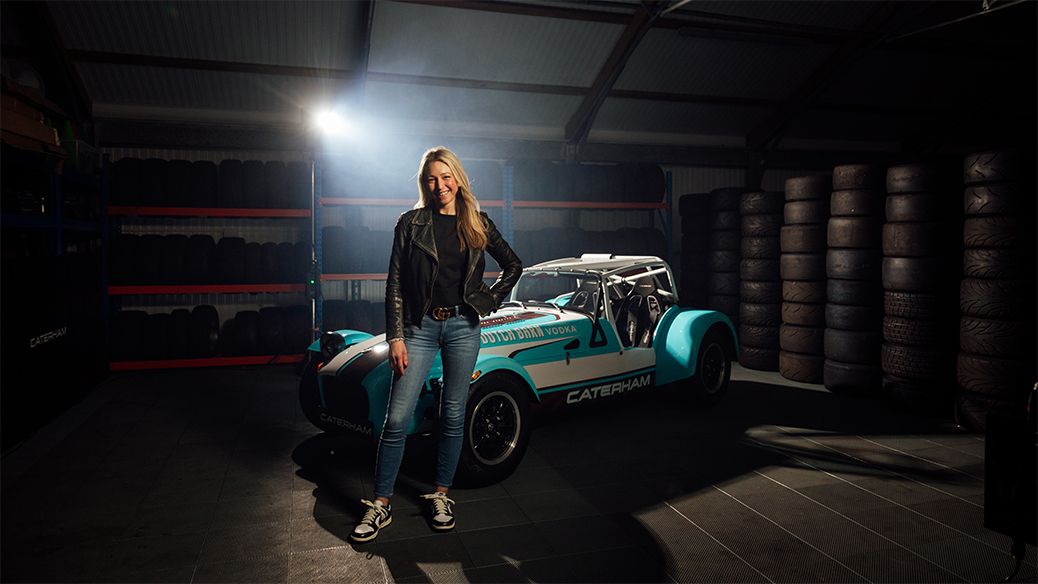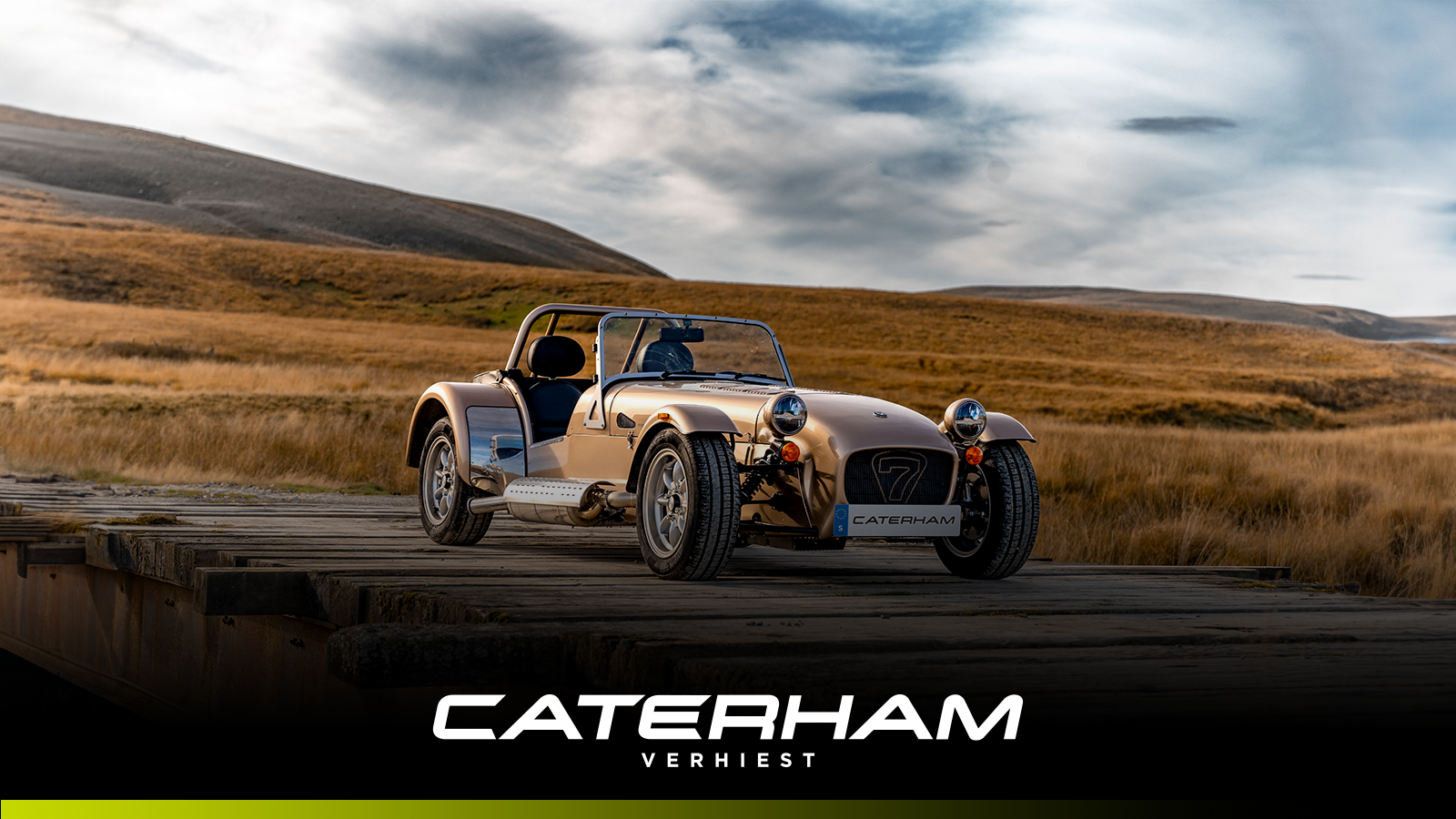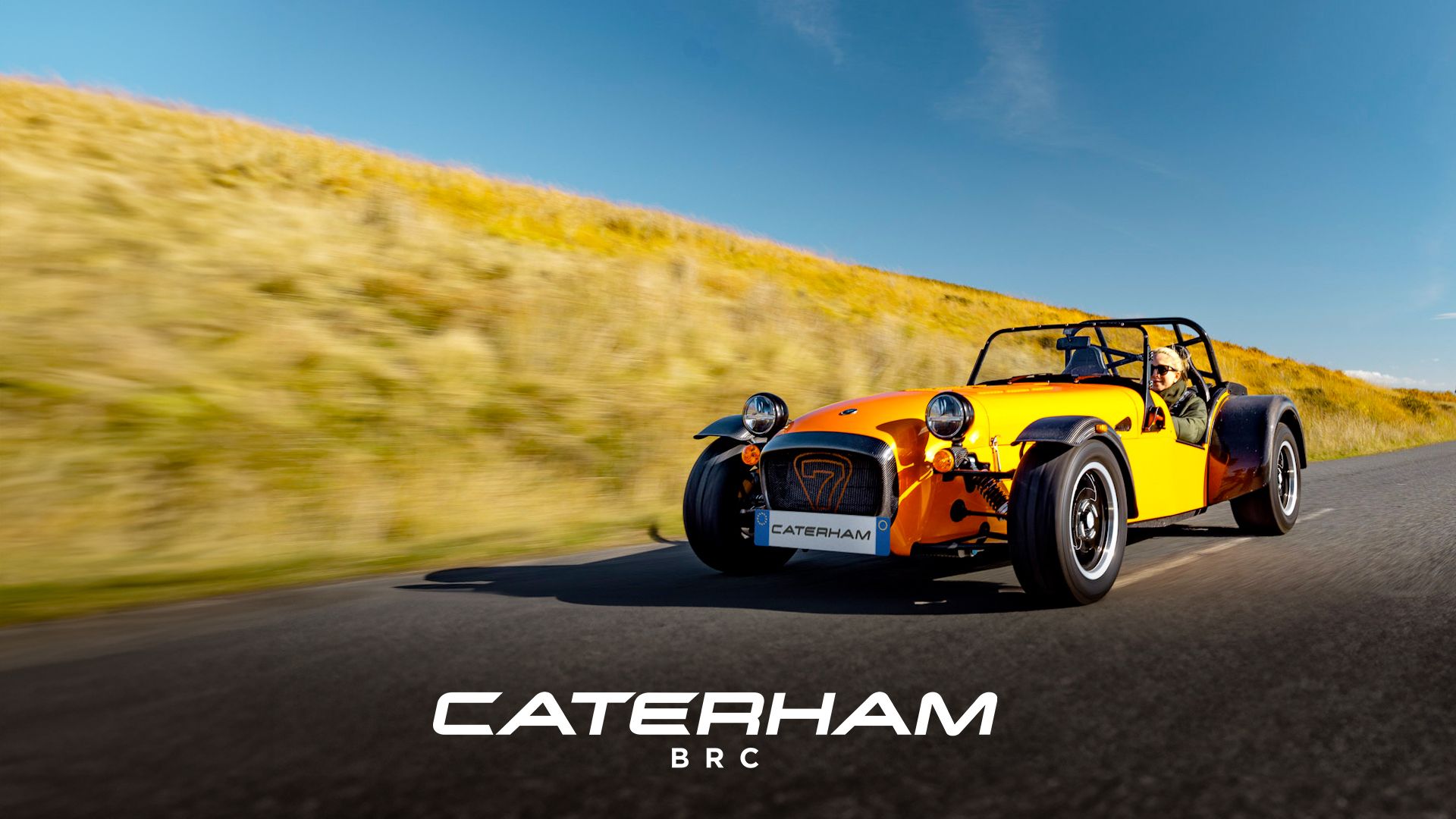The countdown for 2024 has officially begun, so we’re taking a moment to reflect on an incredible 50th anniversary year for Caterham. While our history has run much longer, our story as a manufacturer began in 1973 when we first took over production to create the Caterham Seven.
Since then, we’ve introduced new engine variants and chassis sizes, appeared on both the TV and the big screen, been the ultimate handling benchmark, created countless special editions, won various awards and remained the ultimate benchmark of handling and lightweight engineering.
To celebrate 50 years of Pure, Simple, Fun – our resident archivist has pulled together the ultimate list of pub-quiz ammunition, showcasing 50 facts about Caterham’s illustrious history. From famous race wins and limited editions to production changes and television fame – it’s all here!
Take a quick flick through our fifty fabulous factoids and celebrate Caterham’s incredible history.
- Naturally, we’ll start right at the beginning…. Caterham acquired the tooling, designs and exclusive rights to the Seven from Lotus Cars in May 1973. The handshake between Colin Chapman and Graham Nearn took place in Pub Lotus in Primrose Hill, London.
- We started building cars in June 1973 in Town End, Caterham, at a rate of circa one Series 4 car per week. Just 38 Series 4 cars were built before production ceased less than a year later when Caterham opted to return to the classic, and much-loved, Series 3 styling, more on that below…
- The first 10 Caterham Seven orders were exported globally. While the first five went to Germany, three cars went to Luanda, Angola and chassis #010 went to Guatemala. Chassis #006 was purchased by Jose Rebocho to compete in the Grande Prémio Café de Angola, a two-hour race held at the Autodromo Internacional de Luanda.
- Caterham relaunched the Series 3 model in 1974 featuring Lotus Twin Cam and Ford Crossflow engine options. It received strong demand from export markets, with the first 100 S3 cars built going to destinations such as the US, Canada, Germany, France, Belgium, Sweden, Japan, Hong Kong, Qatar and Libya.
- French actor Jean-Paul Belmondo drove a Super Seven in the 1979 French action movie “Flic Ou Voyou” or “Cop or Hood”. The white Super Seven, complete with a black interior and red seatbelts was the car of choice for the main character – who famously drove through some French doors and into someone’s lounge….
- Caterham revealed the Silver Jubilee edition Seven at the 1981 London Motorfair, limited to just eight examples, to mark 25 years of the Seven in 1982.
- In 1984, Caterham launched the Cosworth-powered 1600 BDR model. At the time it was the fastest production Seven built to date and boasted a power-to-weight ratio of nearly 300bhp per ton.
- In 1986, an HPC model launched with a Cosworth 1700 engine, and sales were restricted to buyers who took Caterham’s two-day High-Performance Course. Just 62 cars were built and it was capable of 0-60mph in 5.0 seconds.
- Caterham launched Super 7 Racing in 1986, the brand’s one-make championship. This paved the way for the future of Caterham Motorsport.
- From the onset, cars were built in the town of Caterham but in 1987, production moved to a larger premises at Kennett Road, Dartford, where cars are still built today. In 2024, Caterham will officially move into a new facility (also in Dartford).
- In 1989, the ‘Prisoner’ edition was launched in homage to the 1966 TV Series, in which Patrick McGoohan drove a Lotus 7 in the opening credits at the start of every episode. The Prisoner edition made its debut at the 1990 Birmingham Motorshow with Patrick McGoohan flying in from Hollywood for its launch. It featured a unique colour scheme (green with a yellow nosecone) and alloy wheel design.
- In 1990, Vauxhall became a new engine supplier with its engines used in the HPC VX and HPC VXI models.
- Caterham switched from Ford engines to Rover K-Series engines in 1991 with the launch of the 1.4 K-Series taken from the then-new Rover Metro GTI.
- The 35th Anniversary edition launched in 1992, marking 35 years of Seven production. The model received wide press coverage when it was photographed being driven by HRH Prince Edward and Lord Montagu of Beaulieu.
- Caterham won the ‘Longest Day of Nelson’ 24-hour endurance race at Nelson Ledges Road Course, Ohio in June 1992. The HPC Twin Cam car built specially for the race won by seven laps and covered 990 laps and 1,980 miles. The driver team consisted of Jez Coates, Reg Price, Robert Nearn and George Alderman. The size of the trophy meant that on the flight home, it had its own seat on the plane.
- The 1992 Jonathan Palmer Evolution (‘JPE’) model featured a Swindon Racing Engines modified Vauxhall 2.0-litre 250bhp engine with a specification almost identical to those used in the British Touring Car Championship. It achieved 0-60 mph in just 3.4 seconds and set a new world record for the fastest accelerating, unmodified production car.
- The Seven has been available to purchase as a fully built car in the UK since 1993 which is when it achieved Low Volume Type Approval. For those keeping up at home, that’s thirty years of Caterham selling a fully-built car.
- The first foray into a non-Seven product… and certainly not the last. Caterham launched a full-bodied, convertible sports car in 1994, the 21, which was based on the Seven chassis. Only 49 examples were built.
- The Caterham Scholarship, now known as the Caterham Academy, originally launched in 1995 and has since seen nearly 1,300 novices become racing drivers.
- The 1999 Superlight R500 model launched with a power-to-weight ratio of 500bhp per tonne. It was powered by a Caterham-modified 1.8-litre Rover K-Series engine with roller barrel throttle bodies to improve airflow – a world first on a production car.
- This was quickly followed by Caterham’s first motorbike-engined car in 1999, the Blackbird, using a Honda Blackbird CBR1100 engine that delivered 170bhp and redlined at 11,750 rpm. This was followed by the Fireblade in 2001 – a specially adapted version of which set a new world record for the fastest speed driven in reverse at 102.52 mph at the hands of Darren Manning.
- The Seven’s chassis dimensions remained unchanged right up until 2000 when the larger ‘SV’ chassis was introduced, increasing the length by 3 inches and the width by 4.3 inches, allowing for more interior space.
- Building on the great success of the R500, Caterham launched the R300 and R400 models in 2002. At the 2002 Nürburgring 24-hour race, the R400 won its class by 10 laps, and came 11th overall out of 200 starters, at the hands of Chris Harris (oh yes, the Chris Harris off the telly), Clive Richards, Chris Cooper and Peter Haynes.
- The 2004 Superlight R500 Evolution used a K-Series engine developed by Minister Racing Engines and achieved a 0-60 mph in 3.2 seconds, 0-100 mph in 6.9 seconds and 0-100-0 mph in 10.7 seconds (faster than the £425,000 Ferrari Enzo).
- We then introduced the biggest change to a Seven chassis since 1973 with the Cosworth-powered CSR200 and CSR260 models of 2005. It was the first use of fully independent rear suspension, reprofiled front wings and an all-new interior with a curved cockpit subframe in a Seven – providing new handling characteristics and improvements in on-road compliance.
- In 2006, Ford Sigma engines replaced Rover as the main power unit in the Seven, with the launch of the Roadsport models and the Superlight 120 / 150 models.
- Caterham partnered with Axon Automotive in 2006 to create the Axon 2R/Eco-M prototype. It featured a carbon fibre spaceframe and enhanced aerodynamics, enabling the car to achieve 131mpg in the 2007 Eco-Marathon.
- The Superlight R500 badge was reborn in 2008 with the launch of a Duratec-engined model. It had 263 bhp with a power-to-weight ratio of 520 bhp per tonne. Options available for the first time included a six-speed sequential gearbox and launch control. It was subsequently named ‘Car of the Year’ by Top Gear and famously set a lap time of 1:17.9 around its Dunsfold test track – faster than the £1 million Bugatti Veyron.
- Caterham Cars was acquired from Corven Ventures by Team Lotus Enterprises in 2011, a group led by Air Asia founder, Tony Fernandes. The company entered Formula 1 that year as Team Lotus (though it was not related to Lotus Cars). For the 2012 to 2014 seasons, the F1 team became ‘Caterham F1’. A Team Lotus edition Seven was also launched, finished in a matching colour scheme to the F1 car.
- In November 2012, a deal was signed with Renault to jointly develop a new mid-engined two-seater sports car, the Caterham C120 / Alpine A110 - separate cars with shared architecture and components. However, Caterham and Renault/Alpine parted company in mid-2014.
- As well as the growth of Caterham F1, in 2013, Caterham moved from its Surrey HQ in the town of Caterham and relocated to a larger, more modern unit near Gatwick Airport.
- Caterham revealed a new concept for a low-cost karting championship in 2013, aimed at novice drivers aged 13 to 16, which would have used its own newly designed kart, the CK-01.
- The 620R model was launched at the 2013 Goodwood Festival of Speed by F1 drivers Charles Pic and Alexander Rossi. It was powered by a supercharged 2.0-litre Duratec engine and featured an all-new six-speed straight-cut sequential gearbox, an LSD and race dampers. The 620R replaced the R500 as Caterham’s flagship model.
- Caterham launched a new entry-level model, the Seven 160, in 2013. Weighing just 490kg, it was powered by Suzuki’s 3-cylinder 660cc turbo engine delivering 80 bhp. It featured a rear live axle, rather than the normal De Dion unit. In Japan, the model was launched at an event at the British embassy in Tokyo.
- Since the launch of the Seven 160 and 620R, Caterham has used a ‘double horsepower’ (power-to-weight ratio) naming strategy. This was continued in 2015 with the launch of the 2.0-litre Duratec-powered 360 as a replacement for the Roadsport 175, along with the introduction of both the 270 and 420 models.
- Caterham launched the Kamui Kobayashi Edition for the Japanese market in 2014, designed by F1 driver Kobayashi, which was a single-seater and featured green lacquer carbon fibre front wings and rear wing protectors – Caterham’s first use of this finish. All but one of the cars built were sold in Japan.
- Caterham partnered with LEGO in 2015 to produce a 620R LEGO set consisting of 770 pieces. It’s estimated that more than ten LEGO Sevens have been sold for every full-size Caterham. This also led to the creation of the world-famous LE60 CAT, better known as LEGO Cat. A 620R, exclusively finished in Lego’s licenced yellow, is still used today for a variety of shows and events.
- The limited-edition retro-inspired Seven Sprint launched in 2016 was created to commemorate 60 years since the launch of the Lotus Seven. It was based on the Seven 160 with the same Suzuki engine but featured flared wings, red leather seats, a red dashboard, a wooden steering wheel and plenty of retro-inspired finishes. It was only available in paint colours offered by British manufacturers in 1967. All 90 cars (30 UK, 30 Japan and 30 Europe) sold out within days.
- The Seven 310R launched in 2016, based on the 1.6-litre Sigma engine used in the 270R but with variable cams and a remap to deliver 152 bhp (compared to 135 bhp for the 270R). It featured double-wishbone front suspension and an LSD.
- Caterham launched its ‘Signature’ customisation programme in 2016 with a special Harrods model to demonstrate the breadth of options available. Caterham famously built the Harrods Edition inside the famous department store, dismantling the car and placing it in an elevator ready for its debut.
- In 2017, Sir Chris Hoy – both a former Caterham owner and racer – set a new world record for the number of donuts in 60 seconds, managing to do 19 in a 620R. In 2011, Terry Grant also set a new world record for the greatest number of non-stop donuts, managing 566 in a 150 bhp Roadsport.
- The limited-edition retro-inspired SuperSprint of 2018 used an uprated 95 bhp version of the 660cc Suzuki engine, tan leather seats and race-inspired details such as an LSD, round chrome mirrors and period decals. It was available in six colour combinations, each named after a historic racing circuit such as Zandvoort and Dijon. Limited to just 60 units, it sold out within days.
- Caterham starred in The Grand Tour’s ‘A Massive Hunt’, with James May using a 310R with off-road modifications to travel across Madagascar. Starting with a road-going 310R, James May created an off-road monster – which didn’t skip a single beat against the offerings from Bentley and Ford.
- At 440kg, the 170R (launched in 2021) is Caterham’s lightest model yet and, possibly, the world’s lightest production car.
- To celebrate the introduction of our lightest-ever production vehicle, we decided to build it somewhere no car had been before. So, we created the world’s highest car dealership at the top of Brighton’s 450ft British Airways i360 Tower and successfully built a Seven 170 in less than 6 hours… while in motion.
- 2022 saw the introduction of our most track-focused Seven yet, the 420 Cup. Completely road legal, it features a 210 bhp 2.0-litre Duratec engine, 6-speed sequential gearbox, fully adjustable dampers and carbon seats.
- Now owned by VT Holdings, Caterham has had three previous owners over the years: the Nearn family until 2005, Corven Ventures until 2011 and Team Lotus Enterprises until 2021.
- There have been several celebrity Caterham owners, including Sir Chris Hoy, Rowan Atkinson, Simon Cowell, Eddie Irvine, Chris Rhea, Nigel Mansell, Guy Berryman, Jonathan Palmer, Theo Paphitis, Lee Dixon and Jeremy Clarkson who purchased one for his ex-wife Frances Cain.
- There have been over 100 variants of the Seven since it was introduced in 1957, and the number continues to grow today!
- Caterham has sold over 22,000 cars to date, in both kit and factory-built form, and used over 35 engine variants. 2021 was a record sales year for the brand, with 670 units sold.
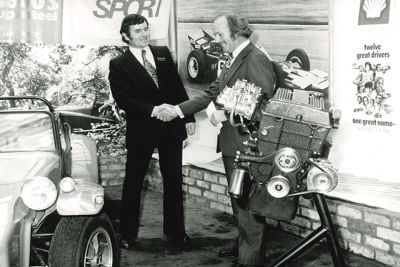
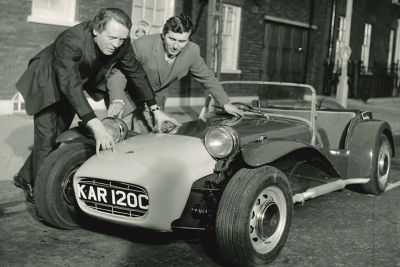
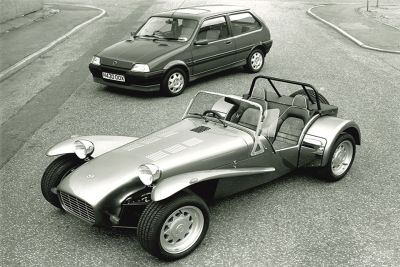
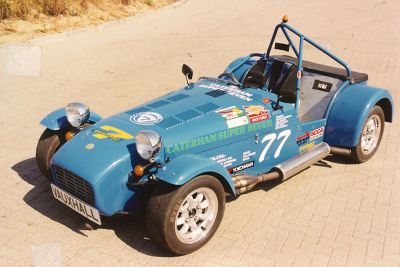

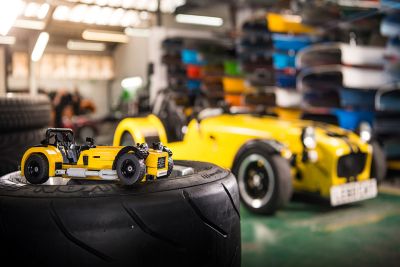
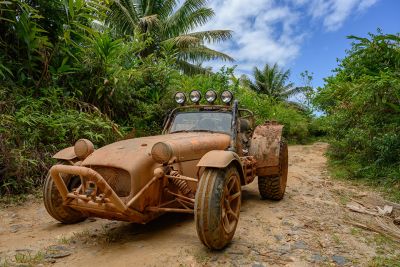

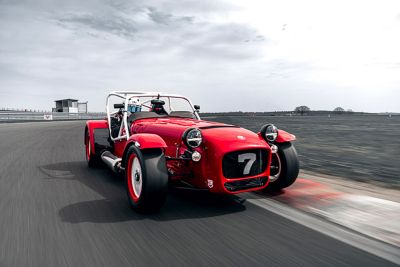
As you can see, we’ve not taken our foot off the accelerator for the last 50 years – and things aren’t about to change. In 2023 we’ve taken our first steps towards electrification, with both the EV Seven technology development vehicle, and the all-electric Project V concept.
Finally, a heartfelt thank you to everyone who has been part of the Caterham journey in the last fifty years. We’re incredibly proud of what our brand has achieved and the community that has grown since, we wouldn’t be one of Britain’s longest-standing small-scale manufacturers without you.
Who knows what the next 50 years will hold?

 UK
UK  Austria
Austria  Belgium
Belgium  Czech Rep
Czech Rep  France
France  Germany
Germany  Italy
Italy  Japan
Japan  Netherlands
Netherlands  Nordics
Nordics  Portugal
Portugal  España
España  Switzerland
Switzerland  Taiwan
Taiwan  USA
USA 


